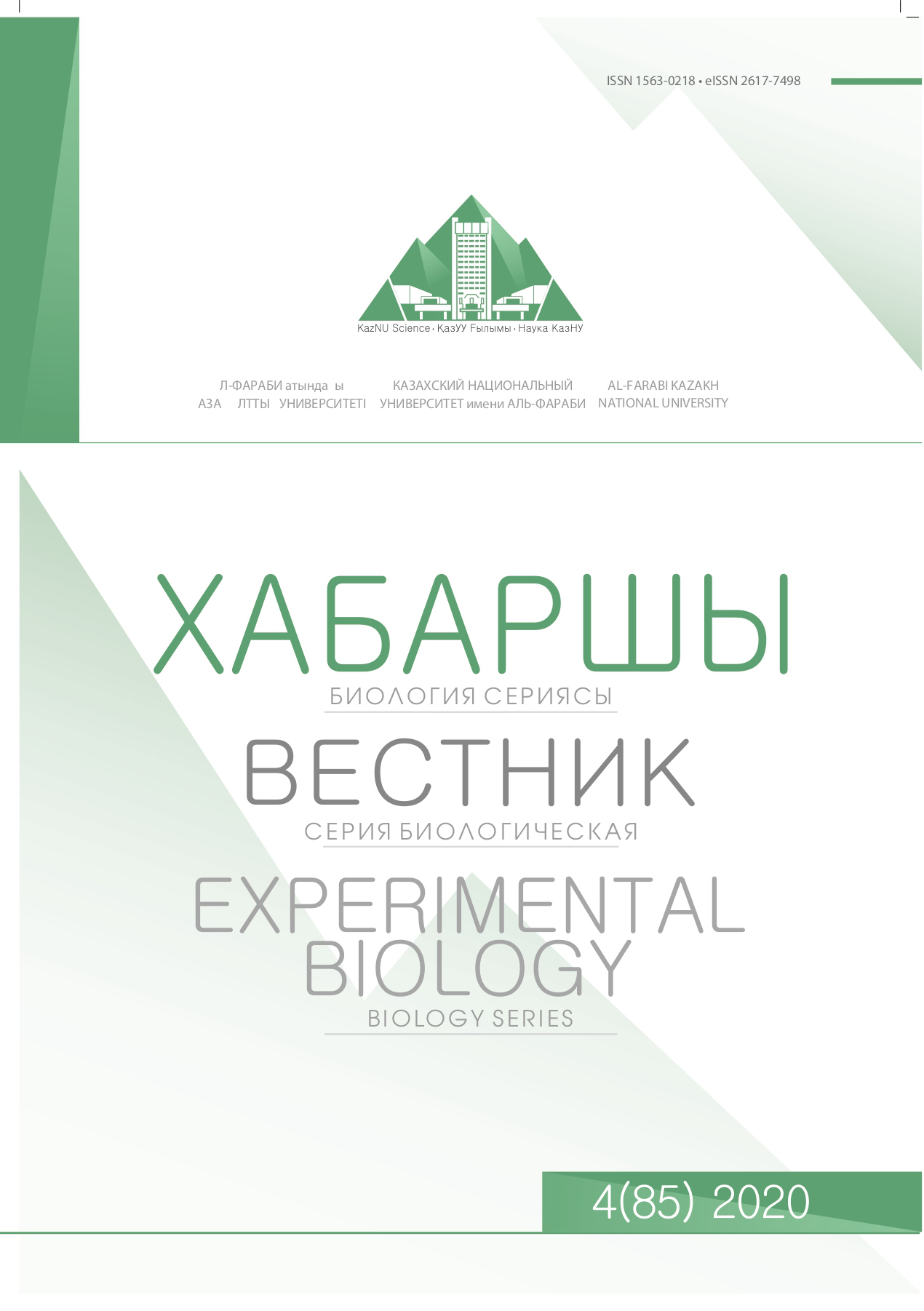Исследование микробиома Galleria mellonella для определения его видового состава
Ключевые слова:
Galleria mellonella, микробиом кишечника, секвенирование 16S рРНКАннотация
Исследование микробиома – это ключевой метод микробиологического исследования, который может быть полезен при решении современных проблем. Организмы с нормальным микробиомом менее восприимчивы к патогенам, а пробиотические свойства симбиотических бактерий в микробиоме положительно влияют на их устойчивое развитие и выживание. Симбиотические кишечные микроорганизмы личинок способствуют нейтрализации инородных патогенных микроорганизмов и их токсинов, а также повышают активность иммунной системы насекомого. Кишечные микроорганизмы участвуют в метаболизме личинок и повышают их ферментативную активность, в связи с чем изучается синергизм кишечных микроорганизмов и ферментов насекомых для определения возможности биоразложения пластичных полимеров. Настоящее исследование направлено на характеристику микробиома кишечника личинок восковой моли – Galleria mellonella и его видовой состав. Всего 38 бактериальных изолятов из микробиома кишечника личинок восковой моли было идентифицировано с помощью анализа гена 16S рРНК. Выделенные избличинок G. mellonella микроорганизмы микроорганизмов можно разделить на три основных рода: Bacillus (60%), Rhizobium (20%) и Pseudomonas (20%). Морфологический и филогенетический анализ показал, что штаммы бактерий, принадлежащие к видам Bacillus amyloliquefaciens, Bacillus velezensis, Bacillus subtilis, Rhizobium pusense и Pseudomonas parafulva, доминировали в микробиоме кишечника Galleria mellonella. Штаммы бактерий, выделенные отдельно из кишечника личинок, могут быть использованы в биотехнологии, сельском хозяйстве и экологии.
Библиографические ссылки
2. Ley RE, Hamady M, Lozupone C, Turnbaugh PJ, Ramey RR, Bircher JS,Schlegel ML, Tucker TA, Schrenzel MD, Knight R, Gordon JI (2008) Evolution of mammals and their gut microbes. Science 320(5883):1647-51. https://doi.org/10.1126/science.1155725
3. Douglas AE (2018) The Drosophila model for microbiome research. LabAnim (NY) 47(6):157-164. https://doi.org/10.1038/s41684-018-0065-0
4. Chevrette MG, Carlson CM, Ortega HE, Thomas C, Ananiev GE, Barns KJ, Book AJ, Cagnazzo J, Carlos C, Flanigan W, Grubbs KJ, Horn HA, Hoffmann FM, Klassen JL, Knack JJ, Lewin GR, McDonald BR, MullerL, Melo WGP, Pinto-Tomás AA, Schmitz A, Wendt-Pienkowski E,Wildman S, Zhao M, Zhang F, Bugni TS, Andes DR, Pupo MT, Currie CR (2019) The antimicrobial potential of Streptomyces from insectmicrobiomes. Nat Commun 10(1):516. https://doi.org/10.1038/s41467-019-08438-0
5. Kavanagh K, Sheehan G (2018) The Use of Galleria mellonella Larvae to Identify Novel Antimicrobial Agents against Fungal Species of MedicalInterest. J Fungi (Basel) 4(3):pii: E113. https://doi.org/10.3390/jof4030113
6. Browne N, Heelan M, Kavanagh K (2013) An analysis of the structural and functional similarities of insect hemocytes and mammalian phagocytes. Virulence 4:597-603. https://doi.org/10.4161/viru.25906
7. Maguire R, Kunc M, Hyrsl P, Kavanagh K (2017) Caffeine administrationalters the behavior and development of Galleria mellonella larvae. Neurotoxicol Teratol 64:37-44. https://doi.org/10.1016/j.ntt.2017.10.002
8. Cook SM, McArthur JD (2013) Developing Galleria mellonella as amodel host for human pathogens. Virulence 4:350-353. https://doi.org/10.4161/viru.25240
9. Olivia L Champion, Sariqa W, Richard WT (2016) Galleria mellonella asa model host for microbiological and toxin research. Virulence 7(7):840-845. https://doi.org/10.1080/21505594.2016.1203486
10. Péchy-Tarr M, Bruck DJ, Maurhofer M, Fischer E, Vogne C, Henkels MD, Donahue KM, Grunder J, Loper JE, Keel C (2008) Molecular analysis of a novel gene cluster encoding an insect toxin in plant-associated strains of Pseudomonas fluorescens. Environ Microbiol 10(9):2368-86. https://doi.org/10.1111/j.1462-2920.2008.01662.x
11. Wojda I (2017) Immunity of the greater wax moth Galleria mellonella. Insect Sci 24(3):342-357. https://doi.org/10.1111/1744-7917.12325
12. Aggarwal K, Silverman N (2008) Positive and negative regulation of the Drosophila immune response. Biochemistry and Molecular Biology Reports 41:267-277. https://doi.org/10.5483/bmbrep.2008.41.4.267
13. Vilcinskas A (2011) Anti-infective therapeutics from the Lepidopteran model host Galleria mellonella. Current Pharmaceutical Design 17:1240-1245. https://doi.org/10.2174/138161211795703799
14. Paolo B, Christopher JH, Federica B (2017) Polyethylene bio-degradationby caterpillars of the wax moth Galleria mellonella. CurrBiol 27(8):292-293. https://doi.org/10.1016/j.cub.2017.02.060
15. Cambronel M, Tortuel D, Biaggini K, Maillot O, Taupin L, Réhel K, Rincé I, Muller C, Hardouin J, Feuilloley M, Rodrigues S, Connil N (2019) Epinephrine affects motility and increases adhesion, biofilm, andvirulence of Pseudomonas aeruginosa H103. Sci Rep 9(1):20203. https://doi.org/10.1038/s41598-019-56666-7
16. Hanson BM, Weinstock GM (2016) The importance of the microbiome in epidemiologic research. Ann Epidemiol 26(5):301-5. doi:10.1016/j.annepidem.2016.03.008
17. Engel P, Moran NA (2013) The gut microbiota of insects - diversity in structure and function. FEMS Microbiol Rev 37(5):699-735. doi:10.1111/1574-6976.12025
18. Lou Y, Ekaterina P, Yang SS, Lu B, Liu B, Ren N, Corvini PF, Xing D (2020) Biodegradation of Polyethylene and Polystyrene by Greater Wax Moth Larvae (Galleria mellonella L.) and the Effect of Co-diet Supplementation on the Core Gut Microbiome. Environ Sci Technol. doi: 10.1021/acs.est.9b07044
19. Novotný Č, Malachová K, Adamus G, Kwiecień M, Lottid N, Socci M, Verney V, Fava F (2018) Deterioration of irradiation/high-temperature pretreated, linear low-density polyethylene (LLDPE) by Bacillus amyloliquefaciens. Int Biodeter Biodegr 132:259-267.
20. Mohan AJ, Sekhar VC, Bhaskar T, Nampoothiri KM (2016) Microbial assisted High Impact Polystyrene (HIPS) degradation. Bioresour Technol 3:204-207. doi:10.1016/j.biortech.2016.03.021
21. Priest FG, Goodfellow M, Shute LA, Berkeley RCW (1987) Bacillus amyloliquefaciens sp. nov., nom. rev. Int J Syst Bacteriol 37: 69-71.
22. Larsen N, Thorsen L, Kpikpi EN, Stuer-Lauridsen B, Cantor MD, Nielsen B, Brockmann E, Derkx PM, Jespersen L (2014) Characterization of Bacillus spp. strains for use as probiotic additives in pig feed. Appl Microbiol Biotechnol 98:1105-1118. doi.org/10.1007/s00253-013-5343-6
23. Gu Q, Yang Y, Yuan Q, Shi G, Wu L, Lou Z, Huo R, Wu H, Borriss R, Gao X (2017) Bacillomycin D Produced by Bacillus amyloliquefaciens Is Involved in the Antagonistic Interaction with the Plant-Pathogenic Fungus Fusarium graminearum. Appl Environ Microbiol 83(19): pii: e01075-17. doi:10.1128/AEM.01075-17
24. Holt J.G., Krieg N.R., Sneath P.H.A., Staley J., Williams S.T. Bergey’s Manual of Determinative Microbiology, 9th ed, Lippincott Williams & Wilkins, Philadelphia: 2000. – P. 541.
25. Tam N.K.M., Uyen N.Q., Hong H.A., Duc L.H., Hoa T.T., Serra C.R.,
Henriques A.O., Cutting, S.M. The intestinal life cycle of Bacillus subtilis and close
relatives // Bacteriol. – 2006 / Vol. 188. – P. 2692-2700.
26. Hoa T.T., Duc L.H., Isticato R., Baccigalupi L., Ricca E., Van, P.H., Cutting S.M. Fate and dissemination of Bacillus subtilis spores in a murine model // Appl. Environ. Microbiol. – 2001 / Vol. 67. – P. 3819-3823.




